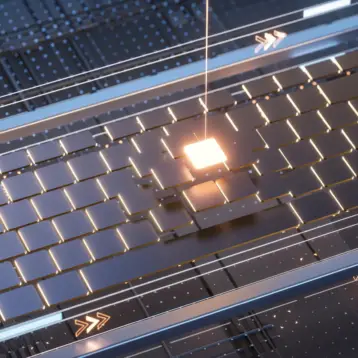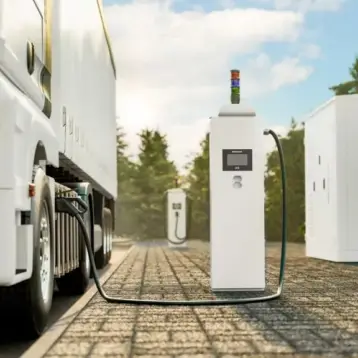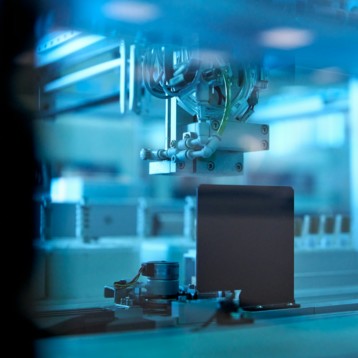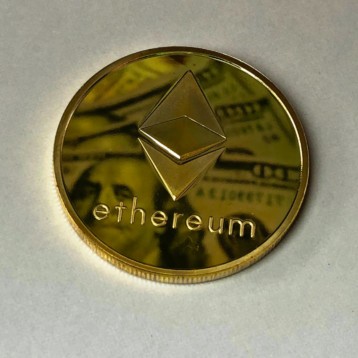|
This innovation is hoped to be embedded into tables and work surfaces so that as soon as a device is placed on the surface, it will be able to draw power. The technology uses magnetic fields to transmit up to 60 watts of power to a distance of up to two to three feet while only losing around 25% of the power during transmission.
A major concern of any wireless power technology is its possible effects on users. Fortunately during the demonstration the electricity was broadcast without electrocuting anyone who passed between the transmitter and the receiver. Intel’s lead researcher Josh Smith explained that, “The trick with wireless power is not that you can do it; it is that you can do it safely and efficiently.” Magnetic fields, used by Intel’s WREL technology do not affect the human body (at least as far as we currently know), unlike electric fields, which might give the user a zap.
The idea of using resonant magnetic fields to wirelessly transmit electricity was demonstrated by a team from Massachusetts Institute of Technology (MIT) who refer to their idea as WiTricity. More recently Intel researchers joined forces with MIT to explore the phenomenon known as ”resonant induction,” and the outcome is a technology capable of transmitting power several feet away without wires.
Currently, resonant induction is used to recharge small devices such as electric toothbrushes. Future induction systems based on Intel’s technology will not be restricted to a physical touch between transmitter and receiver and will be able to transmit power over a distance of several feet with efficiency of 50 percent or more.
“In the future, your kitchen counters might do it [supply the power],” Mr. Smith said. “You’d just drop your espresso maker down on them and you would never have to plug it in.”
|
The new technology would initially be used to charge the battery of devices such as laptops, cameras, and cell phones, but Intel hopes to eventually eliminate the use of batteries altogether. Enderle Group analyst Rob Enderle said, “That is potentially a world changing event. This is the closest we’ve had to something being commercially available in this class. Previous wireless power systems consisted basically of firing lightning bolts from sending to receiving units.”
Intel is not the only player in the growing market of wireless power companies. Many companies are currently working on different types of wireless power technologies. Two American start-up companies, WildCharge and WiPower, have already shown simpler wireless power technologies. Intel’s next target is to design a system to recharge a laptop computer without wires.
Intel looks on this next development as a strategic move since attaching a WREL receiving antenna to a laptop would be easier than trying to implement the WREL technology into cell phones or PDAs due to their small size compared to the WREL receiver. If successful, the system would be implemented in airports, offices, and other buildings and deliver power to laptops and other mobile devices. The technology could also be built into plugged in computer components, such as monitors, to enable them to broadcast power to devices left on desks or carried into rooms.
Smith says that Intel’s wireless power system is still in an early stage of development and much research remains before it can be brought to the market. “You’d like to cut the last cord,” Smith said. “It’s great that we have wireless email and wireless internet and stuff like that but at the end of the day it would be nice to have wireless recharge as well.”
You can read more about MIT’s first test of the technology mentioned above in “Wireless Power Demonstrated,” where a 60 watt light bulb was able to be lit wirelessly from a distance of about 2 meters in mid 2007. Another wireless power technology is currently being developed by the U.S. company Fulton Innovation under the title “eCoupled Wireless Power.” While waiting for all those wireless power technologies to be developed, you can check out a new, fully operational, green plug universal adapter, which helps you power all your devices from a single adapter.
More information can be obtained on Intel’s website and blog. Several videos show a demonstration of the WREL technology (here, here and here).












